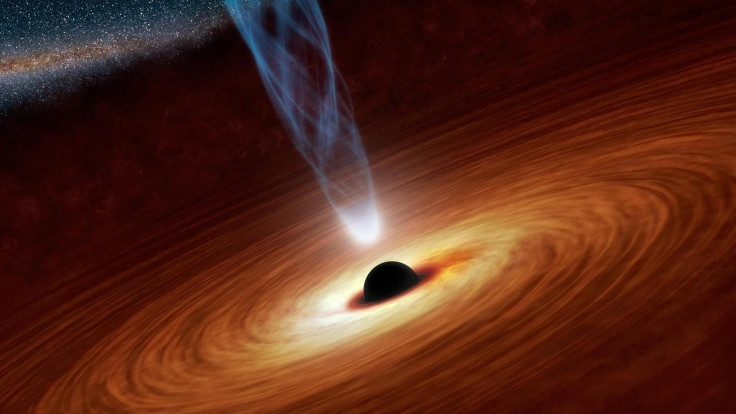Astrophysicists Discover Method To Weigh, Measure Invisible Black Holes

Astrophysicists have figured out a new way to weigh black holes, even though they can’t see them.
This method for estimating a black hole’s mass came from closer observation of what happens when a star is torn apart by one of these space voids, whose gravitational pull is so strong that not even light can move fast enough to escape their grasp. The researchers found patterns in X-ray light coming from these events and used that new information to infer how heavy the black holes are.
The specific space phenomenon they were looking at was a sort of space doughnut — some stars that encounter black holes are pulled on in such a way that they are ripped into a stream of material that spins around the black holes in a disk, known as an accretion disk. Scientists have previously used the glow from accretion disks to estimate a black hole’s mass, because its properties and its formation speak to the black hole’s size and gravity.

Watching matter fall into black holes is a key way scientists observe these space monsters, because the absence of any light coming from the objects themselves makes it difficult to observe them directly.
“If a black hole absorbs a substance, there is a so-called accretion,” researcher Elena Seifina said in a statement from Lomonosov Moscow State University. “Due to friction and heating, it causes radiation which allows us to indirectly see the object and say that this is a black hole.”
Without this process, “then we may not even suspect of their existence.”
For this new project, the researchers saw how X-ray emissions coming from the doughnut-shaped interactions between stars and black holes change during those events, including the similarities between them. If the flares produced in the interactions are similar, “then the processes occurring in them are also similar,” the university explained about the research.
Meanwhile, the differences in what could be observed offers hints about the varying distances and masses of the black holes.
The team compared the black holes of unknown size to ones with a known mass to estimate their weights.
An example of one of these black holes devouring a star is Swift J1644+57. Scientists had noticed this object several years ago, when a star got too close and the supermassive black hole emerged from a dormant state to gobble it up. The subsequent interaction lasted for about two years, sending X-rays hurtling toward Earth during that time.
The researchers estimate that Swift J1644+57 has 70 million times the mass of the sun.
“This is really an object that we do not see, but which provided high luminosity due to its strong gravitational field and an accretion disk around it,” Elena Seifina said.
Her team hopes other astronomers will be able to use this method to determine masses for other objects that are difficult to observe.
© Copyright IBTimes 2024. All rights reserved.











